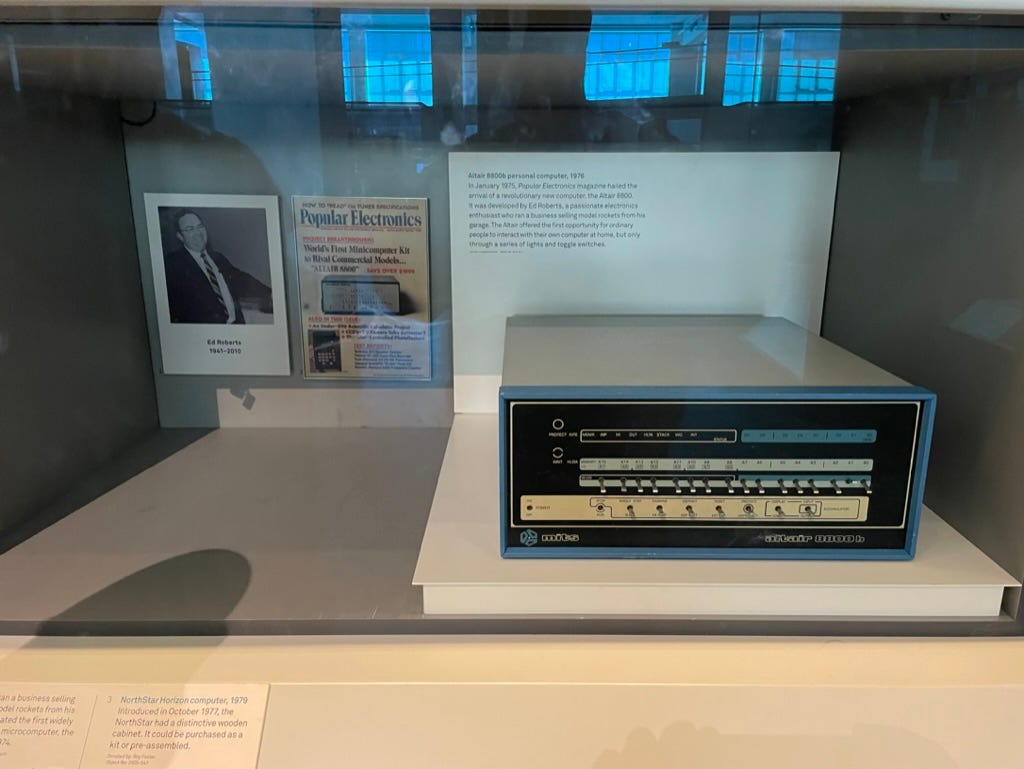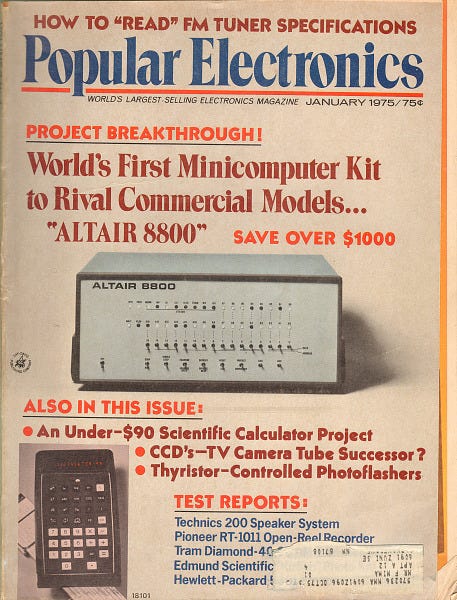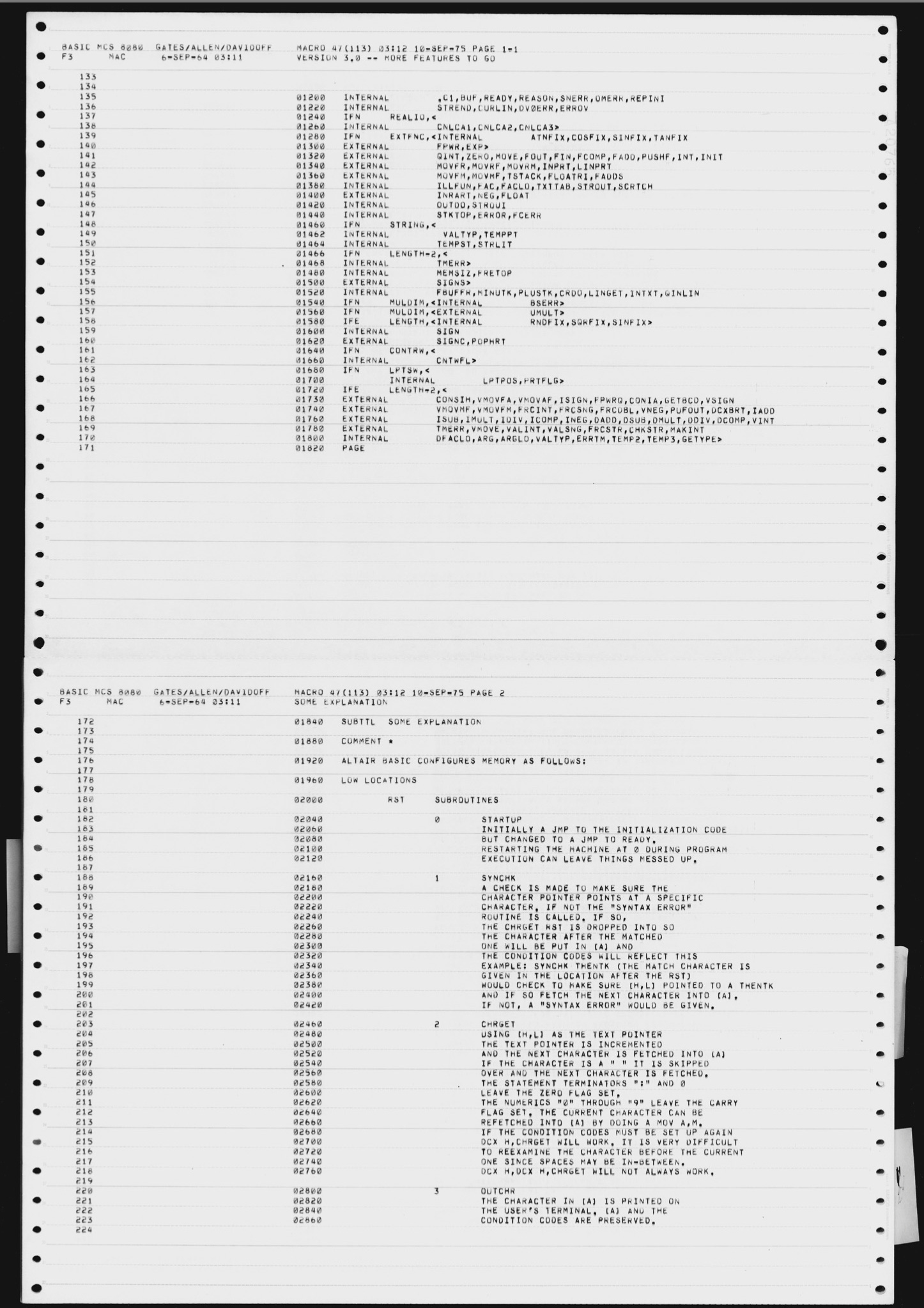You might think that Apple, Commodore or perhaps Radio Shack made the first personal computer, but you’d be wrong. Although the Apple I appeared in 1976, and then in 1977 the Apple II, Commodore PET and TRS-80 all appeared, there was one personal computer that preceded them all: The MITS Altair 8800 from 1975, considered the first commercially successful personal computer.
The Altair was created by a small company called MITS, which initially stood for Micro Instrumentation and Telemetry. In 1974 MITS had been selling calculator kits via mail order. Later in the year they started working on a computer based on the then-new Intel 8080 8-bit CPU. About this time they were contacted by Popular Electronics magazine who was looking to do a feature on a computer project.
The Altair name was taken from the brightest star in the Aquila constellation. It is one of the closest stars to Earth and the name was considered futuristic.
This all coincided with the January 1975 issue of Popular Electronics. The Altair was featured on the cover and there was a companion article (written by Ed Roberts, owner of MITS) titled “Project Breakthrough! World’s First Mini-computer Kit to Rival Commercial Models”.
The computer kit sold for $397 (about $2359 in 2023). Being a kit, that meant that you had to assemble the computer yourself. It didn’t even have a keyboard or display as you used it via its toggle switches and blinking lights!
For your money you got the case, power supply, motherboard, CPU board, front panel with switches and LEDs, 256 bytes of RAM and assembly instructions. You could pay a little more and have it pre-assembled for you, but that would have delayed delivery. It was so popular that people were known to drive to Albuquerque, New Mexico to personally pick one up!
The Altair doesn’t look all that “personal” today, but it is considered a personal computer because a single person could afford to purchase it themselves, something remarkable for 1975.
Initially MITS had hoped to sell about 200 kits in order to break even, but they sold many, many more than that. Estimates are that about 1,000 were sold in the first month and that about 25,000 kits were sold in total. The percentage of those kits that were successfully assembled by customers is likely pretty low, however. I suspect many people wanted (and bought) one just so they could say they had a computer!
The Popular Science article caught the eyes of Bill Gates and Paul Allen. Bill was a student at Harvard at the time and he knew Paul from when they both attended Lakeside School in Seattle. They decided they needed to jump on this new industry that was forming before their eyes and worked quickly on a version of BASIC for the Altair.
This BASIC was implemented on the Harvard PDP-10 mainframes by Bill and others (using an emulator they also had to write since they didn’t have an actual Altair to use), with Paul Allen flying to Albuquerque New Mexico in the summer to demonstrate it to Ed Roberts.
There were some ethical questions regarding the use of the Harvard computers to development commercial software. I believe Harvard put some rules in place to prevent this from happening again.
A deal was made and Microsoft (or Micro Soft as it was at the beginning) was formed. BASIC gave the Altair an actual useful program and made it easier for people to write their own programs, although you needed to also upgrade the Altair to at least 4K of RAM ($$$) to even run it.
On April 2 2025, the 50th anniversary of Altair BASIC, Bill Gates made the original assembly source code available in the form of a PDF. Others have since put it on GitHub in text format.
The Altair didn’t survive for very long, but essentially being responsible for the creation of Microsoft is a pretty Big Deal. It also inspired a young Steve Wozniak to create the first Apple computer, using the less expensive MOS 6502 CPU. This first Apple I was also primarily a kit.
The Altair also introduced the S-100 bus that became a standard that was used in a variety of other niche computers around the late 70s.
I was able to see an Altair 8800 when I visited the London Science Museum a couple years ago. It was somewhat larger than I expected.

Here is the text from the placard:
Altair 8800b personal computer, 1976
In January 1975, Popular Electronics magazine hailed the arrival of a revolutionary new computer, the Altair 8800.
It was developed by Ed Roberts, a passionate electronics enthusiast who ran a business selling model rockets from his garage. The Altair offered the first opportunity for ordinary people to interact with their own computer at home, but only through a series of lights and toggle switches.
But it was the computers mentioned above, all released in 1977, that took the personal computer revolution mainstream. Each of those were complete, assembled, fully working and useful computers all at rather affordable prices for the time. No longer did you need an electronics degree to assemble an inexpensive computer or be a business that had to spend tens to hundreds of thousands of dollars (and have a staff) in order to use a computer.
Happy 50 years to the Altair and Microsoft BASIC!

